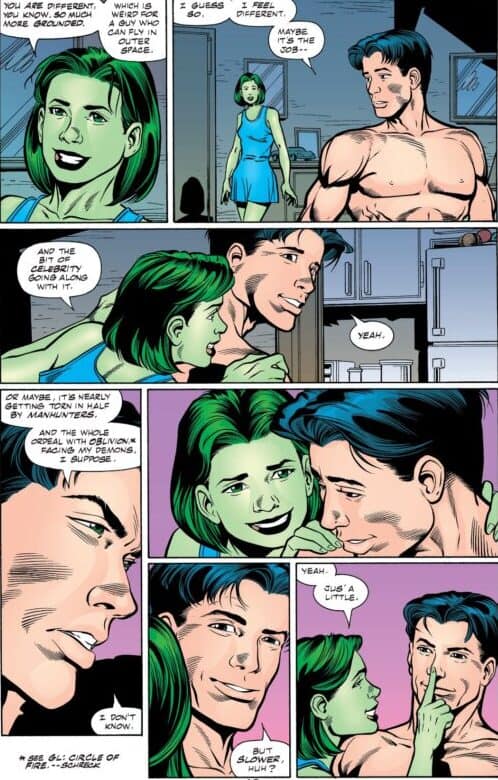***Contains Spoilers***
When I think of a great Green Lantern story, Circle of Fire immediately comes to mind. This miniseries focuses on Kyle Rayner, the then-bearer of the Green Lantern mantle, and his battle against Oblivion, a cosmic threat who seems intent on destroying the universe. Along the way, Kyle teams up with an unexpected group of Green Lanterns—constructs of his own subconscious—while receiving guidance from Hal Jordan (as the Spectre), John Stewart, and Guy Gardner. It’s a story of legacy, personal growth, and overcoming doubt, all while delivering high-stakes action and emotional payoffs.
This was truly his “coming-of-age” story, where he evolved from the rookie Green Lantern and JLA “young gun” into a worthy heir to the Green Lantern legacy. The revelation that Oblivion was born from Kyle’s own fear and self-doubt wasn’t shocking—longtime readers probably saw it coming—but the creativity behind the other Green Lantern “constructs” absolutely caught me off guard. These allies, who embodied Kyle’s idealized visions of heroism and justice, forced him to confront his insecurities in a meaningful way, all while showcasing just how imaginative and powerful his ring can be.
The emotional depth of this story is what really hit home for me. The closure Kyle gets regarding Alex, his late girlfriend, was both poignant and cathartic. It didn’t feel cheap or forced; instead, it provided a sense of healing for Kyle, who’d carried the weight of her death since his introduction. Meanwhile, the appearances of Hal, John, and Guy were perfectly balanced. Each provided sage advice or encouragement without stealing the spotlight from Kyle—this was unquestionably his story to tell.
Additionally, the parallel storyline involving Nero and the yellow power ring from Qward was the highlight of the ongoing series during this period. It felt like a natural evolution of Kyle’s character arc to confront the infamous weakness of Green Lanterns head-on. This was also a clever way to loop in the Justice League without overshadowing Kyle’s journey. His ability to tackle this challenge on his own terms showed how much he had grown since his early days as a Lantern.

If I had to nitpick, I’d say the pacing in the middle felt a little uneven. Some of the side plots with the Green Lantern constructs felt like they could’ve been trimmed, and the JLA’s involvement, while welcome, occasionally felt like it stretched the story a bit thin. That said, these are minor critiques in the grand scheme of things.
In the end, Circle of Fire stands as one of my all-time favorite Green Lantern stories. It’s a testament to Kyle Rayner’s depth and resilience, showing why he’s earned his place in the Green Lantern mythos. With its mix of emotional storytelling, creative constructs, and high-stakes action, it’s a story I’ll happily revisit time and again — five stars.
Feature Image Green Lantern #134 cover art by Todd Klein, T. Horie, Rich Faber & Darryl Banks
Keep NewToComics.com running with a donation or shopping with through our affiliates—your support helps maintain the site and continue guiding new readers into the world of comics!


